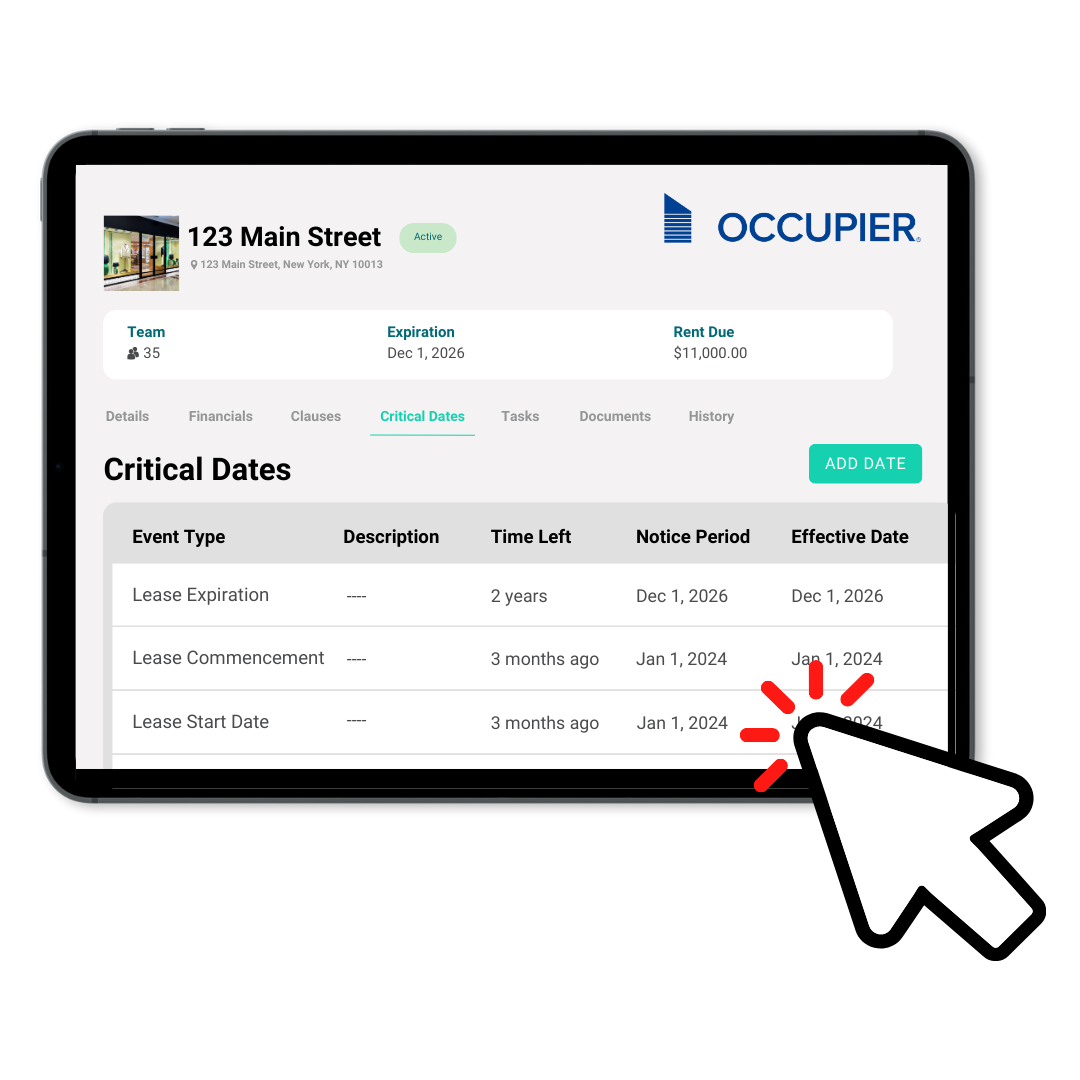Lease Portfolio Optimization: Real Estate Management
Last Updated on August 14, 2024 by Morgan Beard
As a commercial tenant, lease portfolio optimization is key to maximizing efficiency, reducing costs, and staying competitive. Through strategic portfolio analysis and lease data review, you can align your real estate assets to meet evolving business needs. This article explores best practices for lease portfolio optimization.
Evaluating the Performance of Existing Locations
One of the key aspects of lease portfolio optimizations is evaluating the performance of existing locations and your overall portfolio risk. As a commercial tenant it is crucial to assess the performance of your current lease portfolio and determine whether each location is meeting your business objectives.
By analyzing various factors such as regional economic trends, foot traffic, customer demographics, sales data and tenant mix, you can gain valuable insights into the performance of individual locations. This analysis can help you identify under-performing locations that may require further attention or potential opportunities for improvements.
Assessing the Need for Consolidations, Relocations, or Expansions
Based on the insights obtained from evaluating the performance of existing locations, commercial tenants can make informed decisions regarding consolidations, relocations, or expansions.
- Consolidation involves merging multiple locations into a single space.
- Relocation entails moving a low preforming lease asset to another location.
- Expansion refers to adding new locations to the portfolio and prepping for growth.
Before executing on these real estate strategies, you’ll need to assess overarching business goals and understand where your lease portfolio is excelling or under-performing. Rather than making real estate decisions in a silo, all efforts should directly align back to advance core business goals.
Achieving Diversity Across Commercial Lease Portfolios
Commercial tenants have ample opportunities to diversify their lease portfolios across dimensions like space usage, asset formats and geographic markets. Applying diversification strategies allows occupiers to mitigate risk and adapt to changing business needs.
Testing Space Types
For office tenants, building a portfolio encompassing traditional headquarters, flexible hybrid spaces and remote work capabilities provides balancing. Having the infrastructure to support distributed teams, collaborate virtually or transition between work models sustains productivity despite shifts in work paradigms.
Within retail, pop-up shops, smaller format stores and mixed-use developments offer ways for tenants to test markets, cater to varied customer behaviors and remain nimble. Deploying a spectrum of physical footprints aligned to location or purpose increases adaptation abilities.
Industrial tenants have tremendous opportunity to diversify their operations across warehouse formats aligned to business needs. For example, industrial tenants can leverage a mix of both large and mid-size fulfillment centers to balance inventory storage with nimbler order processing for e-commerce or omni-channel models. Deployment of micro-fulfillment centers in urban cores will enable faster last-mile deliveries and cater to customer desire for speed.
Exploring Multi-Market Presence
Spanning different cities, regions and even countries helps commercial tenants smooth out geography-specific demand shifts. A presence across numerous markets ensures occupiers avoid overexposure to localized economic fluctuations or changes in preferences.
If a tenant concentrates their portfolio in just one market, they become significantly exposed to economic shifts in that area. A downturn that impacts business operations there will disproportionately disrupt overall performance. However, with integrated operations across 20 major metro markets for example, negative impacts become diluted. No one city carries existential risk.
Not only does spanning markets provide risk management, it also enables tenants to better serve business customers at the national level. Retailers can distribute inventory across regions, while professional service firms can deploy talent nearer to client sites. This proximity and access bolsters client satisfaction.
Laying a Mix of Lease Structures
Agile lease portfolio management now involves blending traditional multi-year leases with temporary spaces secured as-needed. This lease diversification allows for fluid growth, innovation testing and swift responses to changes in business conditions. Specifically, tenants are advised to balance out portfolios through an optimal mix of space types — flexible coworking space memberships to support distributed teams, short-term pop-up locations for new market testing, adjustable “flex space” leases to right-size quickly and built-to-suit owned assets for permanent capacity.
Rather than leasing for 5+ years across the board, portfolios should include options for short installations when initiatives call for tranches like 3-6 months up to 2 years. Built-to-suit creates owned, customized facilities tailored for specialized activities at prime locations when expansion is clearly permanent. Having this spread of lease terms and mixed asset types from instantly available flex space to long-owned real estate, empowers occupiers with the right facility mix.
Market Trends and Consumer Demands
Lease portfolio optimizations also involve staying abreast of market trends and understanding consumer demands. By analyzing market data, you can identify emerging trends and adjust your lease portfolio accordingly. For example, if there is a shift in consumer preferences towards online shopping, you may consider downsizing physical locations and investing in e-commerce capabilities.
Understanding consumer demands is equally important. By conducting market research and studying customer behavior, you can identify areas where your target audience resides, their preferences, and their spending patterns. This information can guide your decision-making process when it comes to lease portfolio optimizations. In addition, the investment decisions associated with these market trends should have a mathematical framework outlining the expected portfolio return on investment.
Financial Management Within Lease Portfolio Optimizations
To quantitatively assess opportunities for portfolio optimization, leverage financial modeling frameworks like the Capital Asset Pricing Model (CAPM). Applying CAPM, tenants can determine individual asset’s weighted betas as influenced by lease rates tied to public indexes, operating expense escalations, and other contractual or by macro market shifts.
These relative risk calculations help inform the assembly of optimized, efficient tenant portfolios tightly aligned to strategic return targets. Tenants can stress test various property combinations based on projected cash flow yields and standard deviation risk exposure. Favoring lowly correlated assets that hedge across outperforming and defensive market cycles produces more stable projected returns without over concentration. Alongside the tangible aspects of locations, the prudent financial structuring of aggregated leased and owned space makes or breaks responsible stewardship of corporate resources in the pursuit of share owner value. Tenants must remain vigilant that every renewal accepted, base rent negotiated and asset added meaningfully contributes to optimized economic outcomes that exceed market opportunity cost.
Leveraging Lease Management Software
Managing a real estate portfolio spanning dozens of locations and leases introduces massive inefficiencies without the right tools. Lease management software helps to centralize all essential data points like expenses, recurring obligations, end dates, document storage and financial metrics into a single, easily accessible platform. Not only does this greatly improve visibility for informed decision-making, but it also enhances collaboration capabilities across accounting, finance and real estate team members. Teams can coordinate renewal timelines, identify savings opportunities, manage workflows and report on portfolios in real-time.
While every tenant faces unique challenges based on business model, industry and goals, applying these optimization best practices allows your organization to perfect alignment between property function and overarching company vision. Continually evaluating asset performance, planning renovations and location adjustments based on strategic gaps, embracing innovation and leveraging technology will translate your lease portfolio into a driver of targeted growth.
Portfolio Optimizations Summarized
Lease portfolio optimizations are essential for occupiers who want to maximize efficiency, reduce costs, and stay competitive in the market. By evaluating the performance of existing locations, assessing the need for consolidations, relocations, or expansions, staying informed about market trends and consumer demands, exploring diversification and new concepts, and leveraging technology, occupiers can streamline their lease management processes and make data-driven decisions. So, why wait? Start optimizing your lease portfolio today and reap the benefits of improved efficiency and cost savings.

Product Tour
Take a self-guided tour and see how the fastest-growing commercial tenants leverage Occupier for lease management & lease accounting.
